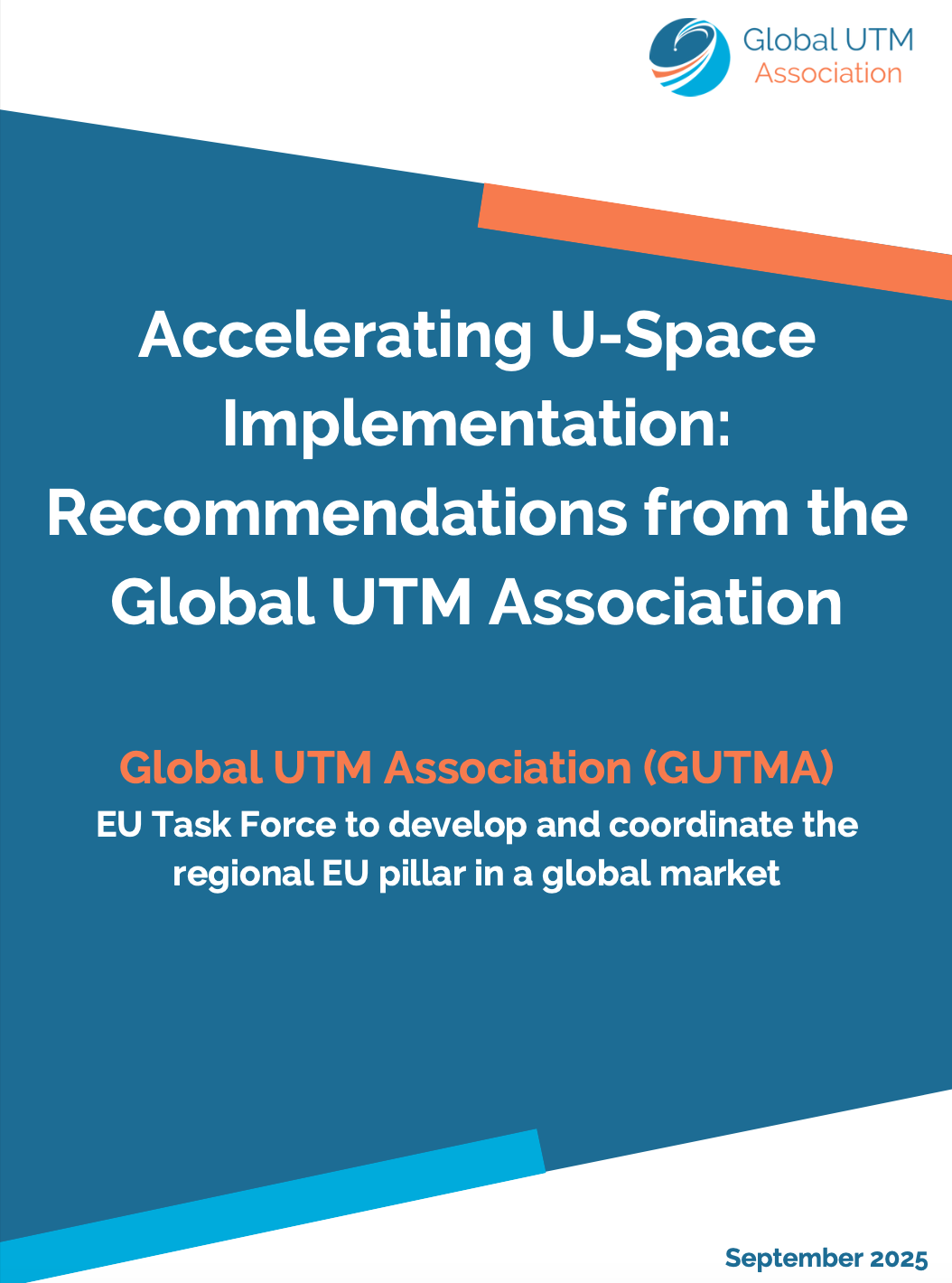“Accelerating U-Space Implementation: Recommendations from the Global UTM Association,” is a report from the GUTMA EU Coordination Task Force to the European Commission (DG MOVE) and EASA, dated September 2025. It contains:
Task Force Mandate: To advise the European Commission and EASA on accelerating and scaling U-space implementation, focusing on pragmatic, short-term measures within the existing EU U-space framework.
Purpose: To provide actionable recommendations to accelerate U-space implementation in the EU, addressing a request from a May 6, 2025, meeting with Christine Berg, Head of Unit Aviation Safety, DG-MOVE.
Structure: It begins with a strategic overview and resource impact analysis, followed by supporting evidence (Section 1) and primary recommendations (Section 2).
Goal: To close the implementation gap and facilitate tangible U-space deployment by 2026.
Key Findings:
E-Conspicuity: Needed but lacks a clear path for implementation and uptake, hindering safe BVLOS drone services.
ARA Overshot: The EUROCONTROL approach to Air Risk Assessment (ARA) is deemed bloated, cumbersome, and costly.
Economic and Strategic Cost of Inaction: Slow, fragmented, and underperforming U-space implementation leads to investor disenchantment, inability to deliver scalable drone services, loss of economic benefits, and missed export opportunities for European technology.
Gaps in Technical Understanding and Institutional Initiative: National authorities and ATC units lack familiarity with UAS operations and U-space concepts, leading to overly cautious decisions and fragmented progress.
EASA Workload vs. Staffing: EASA’s workload is rising faster than its staffing capacity, particularly in emerging domains like Drones/U-space.
U-space Certification Throughput: EASA’s strategy of certifying one USSP/CISP at a time indicates deliberate throughput reduction due to resource pressure.
Access to UAS Operator Registration Data: Certified USSPs need access to UAS operator registration systems for effective services like identification, validation, and compliance monitoring.
Confusion about U-space Definition: Some Member States misunderstand U-space, claiming to have it with only basic flight intention apps, leading to issues with harmonization, interoperability, and safety.
Proposed ‘Quick-Win’ Actions:
Publish a U-space Implementation Handbook to minimize interpretation variations, provide common vocabulary, and streamline processes.
Develop a mechanism to show EC + EASA coordination progress, digital airspace progress in CAAs, and enable digital capability within CAA staff (e.g., a “Joint U-space Implementation Steering Group”).
Establish U-space Test and Innovation Zones (UTIZs) to co-develop, test, and validate U-space services in real-world, controlled environments.
Allow input from industry regarding where to create U-space by enhancing the IAM hub.
Strengthen EUROCONTROL support to EASA for Airspace Risk Assessments and evaluate CAA staffing for U-space activities.
Provide certification and onboarding criteria in the form of a checklist for USSP and CIS(P) candidates.


